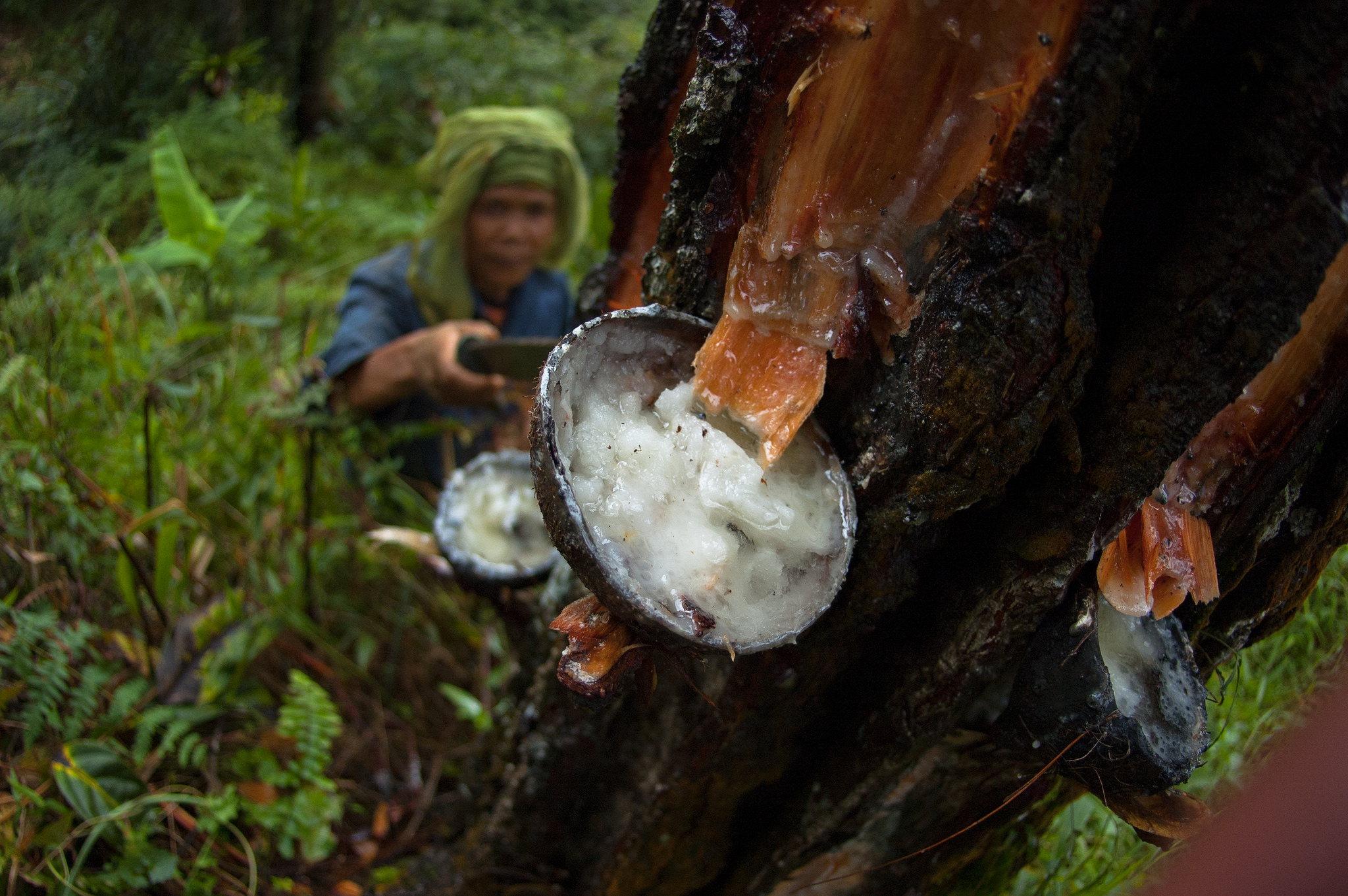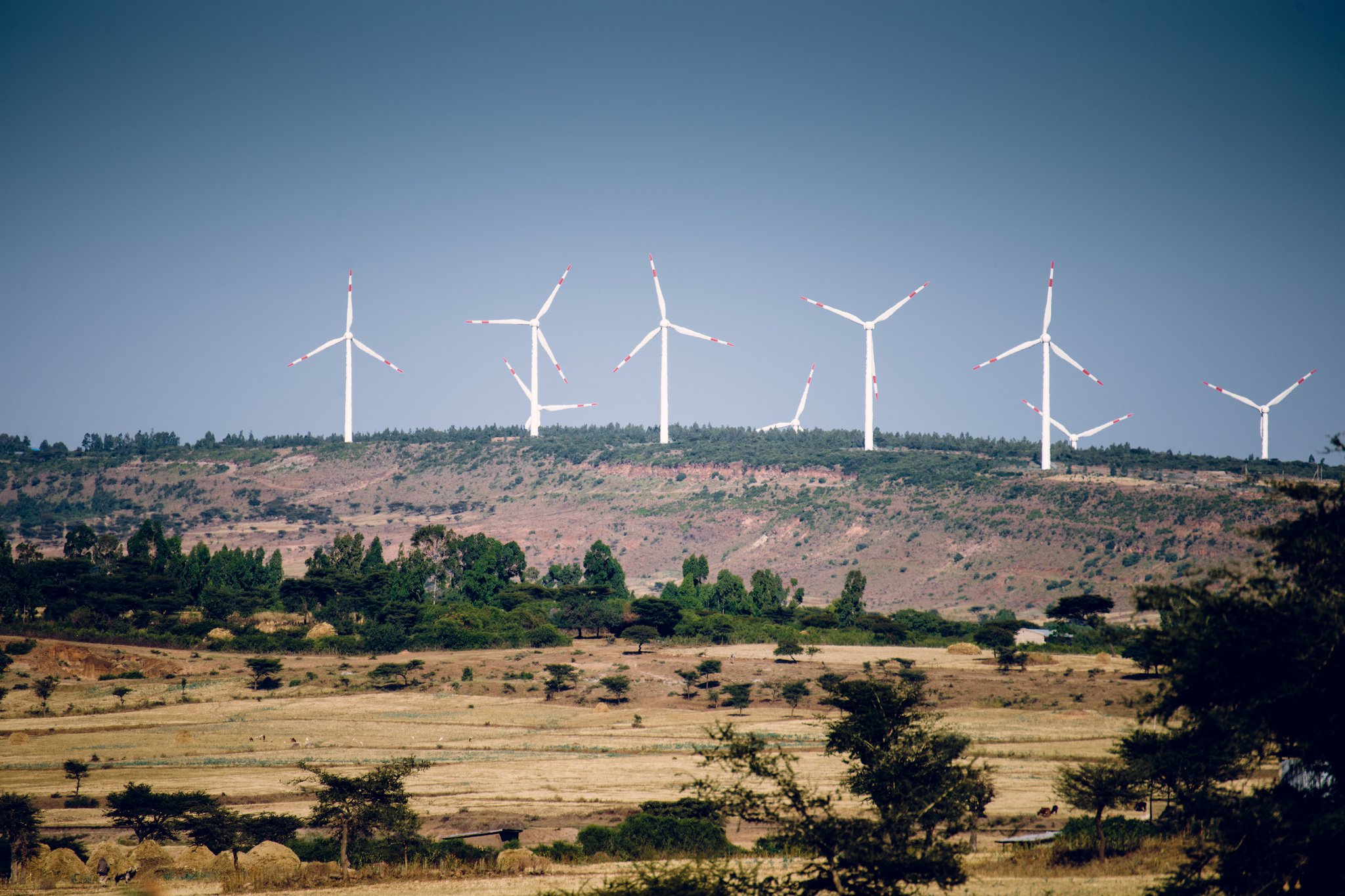On a map of global landscapes, the most expansive ecosystem won’t appear: finance. It’s the underlying rooted network channeling funds to the right places at the right times, or the superimposed atmosphere raining down fertilization where needed. However you view it, it’s a constitutional source of life for its biological brethren, and enormously so.
Yet sustainable finance is also struggling to adapt to the rapidity of global development, forcing global research and dialogue to move quickly in figuring out how to keep it healthy and green. What existing mechanisms can we leverage, and what must we innovate? What financial infrastructure do we prune, replant, grow?
Such was the focus of the third annual Global Landscapes Forum Investment Case Symposium. Looking at the state of landscape investment this year, the event pulled certain topics forward as being important of late: blended finance, bonds and blockchains. (Another, REDD+ finance, has already been covered by Forests News here.) Below is a synthesis of discussions on the three.
BLENDED FINANCE
Thirty years ago, China’s Loess Plateau had reached a desperate state of soil erosion and land degradation. After centuries of unsustainable grazing and agricultural practices, an area the size of France that had once fed nearly a quarter of the country’s population had floods and crop failure as its norms, keeping millions in poverty with no way out.
The World Bank stepped in, and with the help of some USD 500 million of public investment matched with about the same from the private sector, the landscape transformed. Incomes doubled, agricultural output shot up, and the dusty dry landscape gave way to fertile terraces – all in just 15 years.
“I’ve seen with my own eyes that it’s absolutely, entirely possible to transform a completely degraded landscape in a very poor environment with no capacity to do anything,” said Juergen Voegele, Senior Director of the World Bank Food and Agriculture Global Practice and member of the Loess project team.
What he’s describing is a successful scenario of blended finance, which the Organisation for Economic Co-operation and Development defines as “the strategic use of development finance for the mobilization of additional commercial finance towards the Sustainable Development Goals in developing countries.” In other words, public or philanthropic capital is put up first to attract further investment from the private sector – something like fluffing the tip jar, but the fluff is real.
It’s irrefutable that public money alone cannot fund the work imperative to achieving major restoration projects like the Paris Agreement, Bonn Challenge and AFR100. But despite growing pressure for the private sector to step up to the plate and chip into such efforts, its role in landscapes is – and should be – limited. Not every climate change effort should be made into a business opportunity, or prioritize financial logic and returns.
“To really start moving the billions, we need to collaborate effectively, and know our role within the ecosystem,” said Jennifer Pryce, President and CEO of non-profit social impact investment firm Calvert Impact Capital. Investing assets, she said, doesn’t solve situations that need legal or diplomatic help.
This reflects in the World Bank’s Maximizing Finance for Development (MFD) concept, which urges development banks and other public funders to pool their capital to help developing countries build policy framework and capacity, cement high standards and reduce as many risks as possible for environmental projects. Once these bones are in place, the private sector can – and will be more apt to – step in and flesh out efforts.
Laura Tuck, the World Bank’s Vice President of Sustainable Development, elaborated on how this manifested in Vietnam’s Mekong Delta, where more than half of the country’s mangroves were cleared for shrimp ponds. After the Bank helped the government mandate 50% of shrimp ponds to have mangroves and take out a loan for restoration, the ecosystems were revitalized, and private companies flocked in for the ease with which they could harvest organic, premium-quality shrimp.
The appeal of blended finance is not exclusive to developing countries. Private landowners and businesses has begun investing more in the U.S. forest estate – the world’s fourth largest – following a 10-year government commitment of federal funding for community-driven projects in 23 different landscapes, to combat the country’s growing spread of wildfire and insect disease.
“That’s that model of long-term anchoring of commitment to a landscape with defined outcomes, supported by the community, that enabled others to say that this is worth leveraging the federal dollar to get additional work done,” said U.S. Forest Service Deputy Chief Leslie A.C. Weldon.
BONDS
With a background in molecular biology and plant breeding, Howard Yana-Shapiro, the Silicon Valley–based Chief Agricultural Officer at Mars, Inc., is a self-proclaimed “gene jockey.” Within the last eight months, he has witnessed big data advance to a point where extraordinarily complex heterozygous genomes can be annotated with ease.
If big data can do it for genes, it can do it for landscape finance, he believes. “I can’t imagine that for the things we’re talking about mixing – bonds, instruments – that you couldn’t write a 3,000 line algorithm that would give you all the answers to all the complexity you’d want to know about which particular finance facility works best in which places.”
Bonds, as he said, are one of the primary mechanisms pushing forward in the landscape arena, serving as a way to refinance and finance projects by channeling capital into an investment that then generates revenue and gets repaid.
Dr. Christine Negra, principal at Versant Vision and advisor to the Climate Bonds Initiative (CBI), the foremost organization focused on advancing the bond market, said the ‘bond universe’ is still in its early days, with different forms popping up left and right. Asia’s first corporate sustainability bond was issued in Indonesia in February. Global green bond issuance reached USD 155.5 billion in 2017, and climate-aligned bonds – which include green certified bonds and non-certified bonds geared toward the low-carbon economy – currently value USD 895 billion.
So far, the Forests Bond launched by the International Finance Corporation (IFC) is at the front of the pack, having received substantial acclaim. A five-year ‘green coupon bond’, it gives investors the choice of taking a 152 million bond in cash or in forestry carbon credits – which can be used to offset emissions or sold on the carbon market – purchased from a 200,000-hectare REDD+ conservancy project in Kenya.
Vikram Widge, IFC’s Global Head of Climate Finance and Policy, said that replicating this bond form in commodity sectors such as coffee, cocoa and oil palm could help build market infrastructure and provide alternative livelihoods to impoverished communities – 90% of which rely on forest resources – while we wait for the some USD 300 billion needed to significantly slow deforestation rates.
CBI is the main hand behind setting global bond standards and sector-specific criteria, to ensure the ‘green credibility’ of bonds – as well as issue a litmus test for the market. “Putting criteria out there is a way to build it and see if they come, to see the demand for certified bonds,” said Negra.
Yana-Shapiro, on the other hand, warned of having too many tick boxes, and said bond measurement should hone in on five criteria only: productivity, profitability, environmental stewardship, good government and solid management, and social inclusion.
He posed the challenge of how to make the landscape sector worth more than Apple, which is soon to break worth of USD 1 trillion. “I would suggest to you that it is not an abstract idea. We are looking at things today that are equally complex in a genome as in a landscape, and we’re able to put that together… to facts and not fiction.”
BLOCKCHAINS
Landscape finance wouldn’t be properly of the times without a disrupter trying to challenge its ways. Blockchains appear to be filling this role, emerging as a viable alternative to the traditional financial system infrastructure in certain situations.
Since Bitcoin emerged in 2008, not coincidentally alongside the global financial crisis and breakdown of trust in financial institutions, cryptocurrency has grown to account for some 400 billion in capital. This capital is distributed through blockchain networks, which Katherine Foster, Advisor on blockchains to the World Bank, defined as “decentralized, distributed, public (more or less) digital ledgers used to record data transactions across many computers.”
With the safety belt of cryptography, information is shared and stored across a chain of devices in a way “considered immutable and unchangeable.” Chains can be public or contained to a private group of users, and uploaded data can include everything from photos to e-signatures and legal certifications.
Because these are peer-to-peer networks that leave out centralized banks, institutions and other middlemen, blockchains can significantly lower transactional costs, both formal and informal. Vice President for U.S. Business Development at blockchain software company ChromaWay Todd Miller said to think of all the money you save by keeping your own records rather than hiring Goldman Sachs: “It’s not black magic here. It’s a distributed database not controlled by anyone.
And for that reason, “It’s up there with drones for how sexy it is for a lot of organizations,” he said.
Blockchain technology also has two defining features of every disruptor worth entertaining: it opens up new opportunities and makes life easier. In its role as a global contractual database time-stamped, date-stamped and signed, blockchain technology could stretch the horizon of capital acquisition, allowing people to borrow or invest without stepping foot in a bank.
By storing similar information on physical assets like commodity crops, it can also help supply chains be more efficient, transparent and safe. For instance, it could help Ethiopian coffee smallholders certify their beans as fair-trade; track the beans as they move through a supply chain, documenting every value added along the way; and ultimately show consumers the origins of their morning cup.
Already, in the famously iniquitous diamond industry, blockchain technology has proven enormously effective in reducing corruption and conflict.
The biggest challenge blockchains face, however, is quality data to insert into their networks. World Bank Land Administration Specialist Aanchal Anand said she often hears institutions say, “I want to be blockchain ready by 2020.” But this raises the question of whether or not they have data in digital form. If a government’s records are written on paper with coffee stains and tears, blockchains can’t help, she said. To get meta about it, data about data going into blockchains is needed to confirm accuracy.
There also needs to be a level of comfort with the technology, which Anand says comes from on-chain trust (knowing that transactions are validated) and off-chain trust (being able to call or email someone if and when something goes wrong).
Nevertheless, in comparison to Wells Fargo, for example, when consumers were oblivious to the grand misuse of their information, blockchains offer a new alternative with enormous positive potential. “We need to evaluate blockchains not compared to a perfect world,” said Miller, “but to the world we’re in today.”
We want you to share Forests News content, which is licensed under Creative Commons Attribution-NonCommercial-ShareAlike 4.0 International (CC BY-NC-SA 4.0). This means you are free to redistribute our material for non-commercial purposes. All we ask is that you give Forests News appropriate credit and link to the original Forests News content, indicate if changes were made, and distribute your contributions under the same Creative Commons license. You must notify Forests News if you repost, reprint or reuse our materials by contacting forestsnews@cifor-icraf.org.


